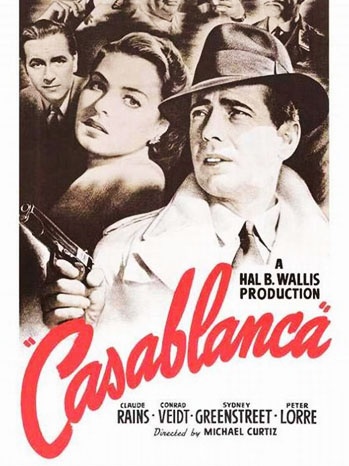Join us in welcoming the beloved, bestselling author of the Harry Potter series, J.K. Rowling, back to the book scene: Write a tribute to the author by writing a comment replying to this blog post or by uploading a photo or video tribute on our Facebook page. Share a favorite quote, tell us how Rowling’s works have affected your life, write about the Harry Potter characters you most love—wow us with the kind of creativity that would impress even the great Rowling herself. We'll showcase the most moving fan tributes on our Facebook page! The author’s upcoming book, The Casual Vacancy, will arrive at your local Queens Library on Thursday, September 27.
Tags
Our borough is the source of countless stories, some recorded and ready to be discovered—in the Queens Library collection, in the Archives at Queens Library, and on the Queens Memory Project website, a collaboration between Queens College and the Archives at Queens Library—and some yet untold, waiting only for you to become the one who documents them. And on Wednesday, September 19, you’ll have the opportunity to work alongside the director of Queens Memory Project, Natalie Milbrodt, during a free introductory oral history workshop being offered at Queens Library at Central. Below, we’ve highlighted other ways you can discover and share the stories of Queens.
Capture the untold stories of Queens: On Wednesday, September 19, from 4-6:30pm, join Milbrodt for an introductory workshop for people of all ages interested in documenting communities, be they defined by geography, religion, ethnicity, school, profession, or lifestyle. Learn about—and put into practice—the key concepts of recording oral history. Refreshments will be served following the program. Preregister online or over the phone (718-990-0837).
Visit the Archives at Queens Library: This year marks 100 years of the Archives at Queens Library. Since 1912, we have collected, preserved, and made available items—including 36,000 books and volumes of serials, approximately 2,500 cubic feet of manuscripts, 4,500 maps and broadsides, 105,000 photographs, 422 feet of vertical files, and 9,000 reels of microfilm— that tell the story of the four counties on Long Island: Kings (Brooklyn), Queens, Nassau, and Suffolk. For more information, check out our digital guide to the history of the Archives and the mini exhibit of our archives.
Browse the Queens Memory Project website: The website pairs the oral histories, photos, and other personal records from Queens residents with materials from the archives of Queens College and Queens Library. You can browse the collection by time period, people and places of import, and more. World’s Fair buffs will find plenty of archival images and historic ephemera to enjoy.
Of the project, Milbrodt says one of her favorite stories to have “captured” is that of Nilda Tirado and her sister Rosa. The pair bought a house together in Flushing at a time when women were first being granted mortgages; they became the first Puerto Ricans to move into their neighborhood. “These ladies are now considered pillars of their community,” says Milbrodt. You can learn more about their story.
Discover items about Queens in our collection: Browse our catalog to discover books, movies, and more about our community. One suggestion? “The one that always stands out to me most is Crossing the Blvd by Judith Sloan and Warren Lehrer,” says Milbrodt. “It's such a beautiful work and the stories (which come from oral history interviews with Queens residents) are extremely compelling.”
Interested in documenting your community? “Start with the right person,” says Milbrodt. “In every group, whether we're talking about a family, a congregation, or a neighborhood, there is always at least one key person whom everyone trusts to hold the memories for that community. Often, it's an elder, someone who enjoys telling stories and has a good memory for names and dates. These are special people and it's easy to recognize them once you're introduced.”
“When I started the Queens Memory Project in Flushing, I got the same advice from several people in my neighborhood, ‘You have to start your interviews with Mrs. Christensen,’” says Milbrodt. “Mrs. Christensen had grown up, raised her own family, and then retired in the same neighborhood and could tell you things like where the family who owned the Hellman's mayonnaise company lived and which houses had been the homes to boys she knew who were killed in World War II. I was delighted to meet Mrs. Christensen and quickly realize that her memory was extremely sharp and that she was happy to share what she knew. Mrs. Christensen passed away before the public launch of the Queens Memory Project. The best thing about our launch event, for me, was seeing three of her daughters in attendance. After the speeches, the three sisters gathered around one of our listening stations to hear part of their mother's interview and see some of the family photos they had lent me to digitize. They said it meant a lot to them to hear their mother's voice again.”
The classic film Casablanca—ranked number three on the American Film Institute’s list of the top 100 movies—celebrates its 70th anniversary this year and you can mark the occasion in a variety of ways with Queens Library, starting this weekend with a free screening of the film at Queens Library at Ridgewood Saturday, September 15 at 12pm.
Free screening of Casablanca at Queens Library at Ridgewood: Join us for a screening of one of the best films of the 20th century, starring Humphrey Bogart and Ingrid Bergman. Plus, as a bonus feature, the cartoon classic Carrotblanca, starring Bugs Bunny, will also be screened. A discussion and trivia game will follow. Refreshments will be available for purchase.
Check out the movie: Can’t make it to the screening? Host your own. Borrow a copy of Casablanca from Queens Library for free.
Check out related books: Our collection includes books about Casablanca—ranging from the history of the region where the movie was set to behind the making of Casablanca and books about Humphrey Bogart and books about Ingrid Bergman, the movie’s famous leads.
Discover more free upcoming events film buffs will love:
Film Screening: Fuel – Saturday, September 15 @ 3pm, Queens Library at Broadway
Film Screening and Q&A with Emmy Award-Winning Filmmaker Ken Kimmelman – Wednesday, September 19 @ 4pm, Queens Library at Flushing
Lights, Camera, Trivia! – Thursday, September 20 @ 2pm, Queens Library at Windsor Park
Film Screening: Garbage Dreams – Saturday, September 29 @ 2pm, Queens Library at Steinway
Film Screening: The Warriors of Qiugang – Saturday, October 6 @ 2:30pm, Queens Library at Sunnyside
Film Screening: Before Your Eyes – Monday, October 15 @ 2pm, Queens Library at Fresh Meadows
Film Screening: Halloween Horror Movies – Saturday, October 20 @ 12pm, Queens Library at Flushing
Louis Armstrong, the legendary jazz musician and longtime resident of Corona, Queens, bequeathed a huge legacy to the world, with much of it right at our fingertips, right here in our borough! This weekend Lincoln Center Local and Queens Library will be partnering to present “It’s All About Armstrong,” a free concert featuring Grammy Award-winning jazz historian Loren Schoenberg, giving you the opportunity to explore the wealth of creativity Armstrong has left us right now! Below, we’ve also highlighted additional ways you can get tuned into Armstrong through Queens Library.
This Saturday: On Saturday, September 8 at 2:30 p.m. at Queens Library at Peninsula, you’re invited to Lincoln Center Local’s “It’s All About Armstrong.” Join Grammy Award-winning jazz historian Loren Schoenberg and his young band of musicians, The National Jazz Museum in Harlem All Stars, for an adventure through the tunes of the world’s most beloved trumpeter. Admission is free. No ticket or preregistration required.
At Queens Library: Our collection includes dozens of books about Armstrong, books by Armstrong, musical scores by various composers as performed by Armstrong, dozens of CDs featuring Armstrong, and DVDs about the great Satchmo. Check out one or many!
At Queens Library at East Elmhurst: Keeping jazz alive in Louis and Lucille Armstrong’s neighborhoods is one of the goals of this community library, home to a “mini archive” (pictured here) of Armstrong memorabilia, books, photos, and more. Special programming—available throughout the year—is also offered for all ages with the goal of celebrating jazz and Armstrong. Find the address of, directions to, hours of service for, and upcoming events at Queens Library at East Elmhurst.
This week at Steinway’s Garden Club, we planted various beautiful flowers all around the garden. We also played a game in the garden where the kids had to guess what each plant/vegetable was by either looking at the plant or by smelling it. A few of the kids were stumped on some of the different plants but almost everyone knew what the tomato plants were! The kids had a great time watering the garden as well and laughed when the water splashed on them because it was so gorgeous and not too hot out. Another successful day in the garden!
The detective story is not usually a genre that is well carried in video games. As a medium that favors more dynamic visuals and faster paced stories, the slower feel found in crime noir and private eye stories are usually relegated to lower budget projects, or at best the handheld market.
L.A. Noire breaks free of that mold, placing the player in the midst of 1947 Los Angeles as an up and coming by-the-book cop who has just returned home from serving in the Marines in World War II. You make your rise through the ranks, starting as a beat cop and work your way up through homicide and vice, breaking through drug rings, corrupt officials, and other conspiracies. You even try to crack the Black Dahlia murder, a crime that remains unsolved here in the real world.
To make this game, Rockstar Games and Team Bondi used innovative motion capture techniques to create such realistic faces that the point is to watch for various facial ticks, wandering gazes, and other signs to see if someone is lying or telling the truth during interrogation. If they’re looking a little shifty, you can press them for more information or show evidence to poke holes at the contradictions in their testimonies.
At the crime scenes, you have to walk around, finding and manipulating objects at the scene to determine what can be used as evidence. The voice acting is top notch and there’s a real sense of emotion coming through each character. On top of this, the developers took the time to create a nearly perfectly accurate map of Los Angeles to for the time period.
Unfortunately, as beautiful as the map is, it is far too big for the game that is set out in it. All the cases happen within confined areas. There are a couple street crimes you can drive out to help in, but they usually involve driving clear across the map to do so. You can make your partner drive and skip to the location, but then you miss out on their chatter on the drive over. In the end, you just end up using the “autotravel” option just to save time.
On an interesting side note, the spelling in the title of Noire was a typo made during the game’s production, though some players noted the unintended pun of the L.A. in the title meshing well with the feminine form of Noir.
I recommend this game if you like detective work and puzzle solving, as well as a wonderful character study of morality and what it means to be a hero.
This week’s craft is Paper Mache hearts. The kids had such a great time with this project because they were able to get messy and what child doesn’t like getting their hands dirty! In order to do this craft, the materials we used were newspaper, paste (flour and water), and balloon hearts. First, I made the paste and blew up the balloon hearts. The kids then were able to cover the balloons with the newspaper covered in paste. Once the balloons was fully covered, we had to wait until the next day for it to fully dry. Once it was dry and hardened, I carefully deflated the balloon and the kids painted their hearts. On the next craft day, the kids will fully decorate their balloons and will finally be able to take them home.
Book lovers, there’s a new free online resource for keeping track of reading lists—all-time favorites, to-read, inspirational titles, any and all the reading lists one could dream up—and that is the new social network Pinterest. Authors, readers, publishers, libraries, and bookstores of all varieties have been giving the site a chance, but is this self-proclaimed “virtual pinboard” for you?
People and companies are using it to organize and show off their favorite things—not just book-related items, but literary-minded folks will find good company—on digital bulletin boards by uploading photos and graphics directly from their computers and smartphones and by “pinning” (the verb form derived from the website’s name) images and graphics they like from websites. Any user can have an unlimited number of boards, and each board can have an unlimited number of pins. Bookworms have definitely found a home there—“Books Worth Reading” is one of the most common board themes.
Queens Library is using Pinterest to browse book covers people have uploaded onto Pinterest, discover great finds from “pins” (the noun formed from the website) from others in the community, and share what we’re reading now, some of our all-time favorite reads, our summer reading recommendations, and more. If you’re a member, follow us! If you’d like to learn more about creating an account on, and making the most of, Pinterest, check out our Pinterest Tutorial, created by our staff—just for you!
Think Pinterest isn’t for you? That’s OK. We’ll still offer the more traditional form of our staff picks posted online and in our libraries.
As always, we’d love to hear more from you. What do you think of Pinterest? What do you think about using social networks to find out more about authors, reading, libraries, and more? Let us know by leaving a comment. Thanks for reading!
Tags
The excitement still continues for those who participated in this years Green Resources fair. Held at the Broadway Library on Saturday July 21, this fair attracted over 300 participants. There were various vendors and many fun activities to take part in. The Environmental Assistants from various branches showed children how to make upcycled crafts. Children were able to identify leaves, paint rocks, and make miniature pencil holders out of plastic bottles! One vendor in particular showed people how to make their own composting! Another showed people how to fix flat tires, while one special vendor showed people how to make their own tea bags. There were raffles and giveaways. A few of the prizes offered were, a tee shirt, a cloth tote bag, and a child's mountain bike. Everyone walked away with a Greening Library tote bag, and a choice of a basil, parsley, cabbage, pimento pepper or begonia plant. Many people walked away looking forward to attending another Green Resources fair.






